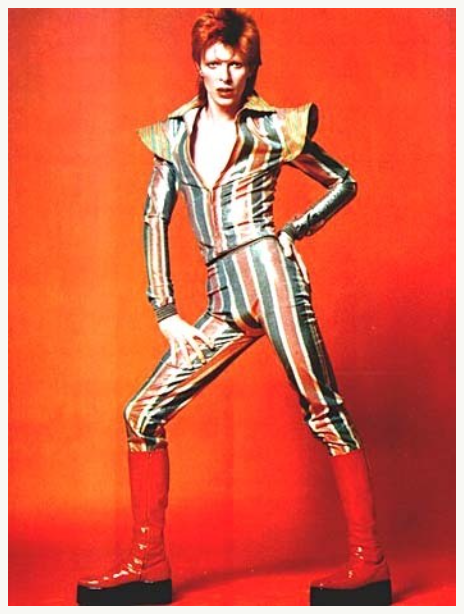How to Build Brand Recall in a Clickless World
Brand awareness is dwindling in organic search. Here's your strategy for building brand equity and recall by leveraging brand awareness. Learn more here.
Read More
You’ve walked past his stores, seen his iconic bobble-head ads, and perhaps even worn his shoes — but do you know his story? In the documentary Maddman: The Steve Madden Story, viewers witness how Steve Madden built his formidable billion-dollar shoe empire, step by step. Here are five things we learned from the Steve Madden brand, beginning with the designer's early days followed by his meteoric rise to success and even a stint in prison.
With $1,100 to his name, Steve Madden launched his eponymous shoe company in 1990. Launched may be an overstatement — he was selling shoes out of his car’s trunk. That didn’t stop him from bringing in more than $38 million in sales a few years later. By the 2000s, there would be over 50 stores, with sales numbers skyrocketing and celebrities championing the brand. Today, there are over 310 Steve Madden brand retail locations in 75 countries worldwide.
Image: Steven Madden
Steve Madden’s deep passion for shoes has always underscored his career. As he says in the documentary:
Find something you love to do and doesn’t matter what it is, and it doesn’t matter what it pays. Find something you love to do that makes you want to get out of bed in the morning.
It’s a sentiment that big-name entrepreneurs, from Steve Jobs to Oprah Winfrey, have repeatedly expressed.
Takeaway: To launch a startup, you don’t need a huge investment or a private equity firm backer. Instead, it’s passion, determination, and great ideas that will make or break your business. Find your love of craft, and success will come.
Steve Madden’s initial traction came from tapping into an unserved consumer base — young women who couldn’t afford high-end luxury shoes but weren’t satisfied by the quality and styles of cheaper options. As the documentary revealed, he would observe his target customers in stores and on the street, all while mentally creating customer personas. He knew that his customers — “the girls we’re dealing with,” he said in an interview — wanted to be perceived by others as edgy, cool, and sophisticated. And so, he designed shoes that fulfilled this niche.
Takeaway: Steve Madden capitalized on an unfulfilled market after spending the time and effort to understand his potential customers inside and out. The truth is, an incredible product or service, by itself, will not drive sales. It must serve a purpose and fulfill a desire — nobody will buy your product if they don’t want it or think they need it. Whether you are B2B or B2C, understanding your customers should be the core of your business. Only with this knowledge can you use marketing and branding to persuade potential and existing customers that they need to buy from you instead of your competitors.
Steve Madden’s doll ads — you know, the sultry ones with giant heads, tiny waists, long leads, and enormous feet — exemplified early-2000s fashion. They were hugely different from the traditional campaigns with waif-like models that his competitors were running. As a result, Steve Madden’s ads were a hit. The brand’s iconic identity and cultural footprint expanded globally, going so far as to inspire the creation of Bratz dolls. To this day, the ads remain one of the most memorable fashion campaigns of that decade.
Image: Garage
Takeaway: To stand out from today’s noisy marketing landscape, don’t be afraid to break the status quo. Whether it’s a controversial campaign (see Heineken’s “Worlds Apart”’ ads); taboo messaging (Yoni’s refreshingly gutsy tampon ads come to mind); or fearlessly sarcastic social media (Wendy’s loves to mock their followers savagely), aiming for something daringly unique can go a long way.
The Steve Madden brand has served as inspiration for fashion trends far beyond the latest fashion trends. “I get my ideas and inspiration from pounding the pavement all over the world,” he once said, citing art, music, paintings, and even the natural world as sources of his creative juices. Fun fact: His famous chunky Mary Lou’s were inspired by platform shoes from the Ziggy Stardust era.
Image: David Bowie Wiki
Takeaway: If you’re struggling to develop a new product idea or marketing campaign, take a walk around the block, flip through a magazine, or tune in to a new playlist. Inspiration is abundant when you look beyond your niche industry.
Besides Steve Madden’s impact as a designer and entrepreneur, he has transformed the lives of many by helping them realize their full potential. While in prison for stock fraud, he taught business classes to other inmates — after his release, he hired many of these former inmates to work at the company. Today, some are regional branch managers. Before the end credits, several of these men voiced their gratitude for him — “When you’re locked up, you want someone who will look out for you. He really is that guy.”
But beyond Steve Madden’s personal philanthropy, the company is also a staunch supporter of several charity organizations, including The Doe Fund, which provides opportunities and resources to former inmates.
Takeaway: Today’s consumers, especially those of younger generations, want to support brands that take a stance on issues they’re passionate about, whether it’s the environment or social justice. For companies, this goes beyond changing your logo to rainbow colors in June or sponsoring a corporate float in a pride parade. Companies need to do more by advocating for a cause and transforming their company cultures around it from the ground up.
Giving back is good for businesses too, attracting loyal customers and brand champions who want to shop at companies that represent their values. Just take a look at today’s flourishing companies — Nike, Patagonia, and Ben & Jerry’s, for example — and how prioritizing social accountability in their business models have significantly impacted their bottom line, for the better.
Though your business may not be in fashion nor grow to become a billion-dollar company, the story of the Steve Madden brand proves there is no right way to succeed. At the end of the day, as long as you keep doing what you love, every hiccup and setback along the way is well worth the satisfaction from the journey.
Last updated on November 3rd, 2022.


